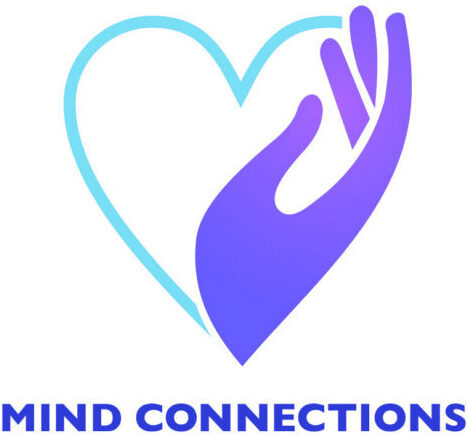5 Mindfulness Practices To Improve Your Wellbeing
With the constant hustle and bustle of daily life, your days may start feeling overwhelming. These stressors could make you feel anxious or restless. No matter what obstacles life throws at you, know that you are strong and are deserving of inner peace! Mindfulness can help you center yourself and alleviate daily anxieties in your life.
What is Mindfulness?
Our society’s pressure to always be productive and constantly accomplish new challenges looms over us all. While being productive can make you feel great, it can also be beautiful to experience life simply by living in the moment. Experiencing life through this steady and peaceful lens can help us garner a new appreciation for the world around us.
Mindfulness is all about experiencing the current moment for what it is. When someone practices mindfulness, they take each moment as it comes, not looking to over-examine or explain it.
Benefits of Mindfulness
Evidently many people can benefit from mindfulness. Mindfulness-based stress reduction is an effective approach to help people to reduce mental health issues and improve well-being. In addition, mindfulness can help alleviate symptoms of anxiety, depression, OCD, trauma, ADHD, and many other physical and mental health issues.
Anxiety
Research has shown that participants who completed mindfulness therapy practices experience decreased levels of stress. When we get stressed, our bodies are innately programmed to fight off whatever is threatening our feeling of peace and safety. Eventually, we are supposed to calm down from this heightened state and relinquish our guard. When people have anxiety, it may feel like this guard is never fully lowered. Mindfulness practices, like meditation, helps to alleviate anxiety. It channels the regulatory processes in our bodies that make us feel relaxed.
Depression and OCD
By the same token, mindfulness can help to alleviate rumination. If someone is ruminating with depression, they are constantly thinking about the things that make them sad or their depressed feelings. Rumination is also linked to people who have OCD. People who have OCD can persistently think about (or obsess over) past events. They will try to replay each instant in their head frame-by-frame to prove something to themselves and alleviate their worries. For example, someone with OCD may worry that they did not shut the stove; this worry may cause the person to replay every step they did in the kitchen over and over again. People with OCD can also ruminate over what they said, actions they’ve done, or things they regret not doing.
Meanwhile, many people with OCD also face intrusive thoughts that make them very uncomfortable. People with OCD might try to block out these thoughts and divert their focus. By changing the topic, they try their best to avoid sitting with these qualms. According to Dr. Hamilton Fairfax, mindfulness might act as exposure therapy to people with OCD. Simply put, mindfulness makes people face their fears head-on and accept their thoughts as they are. This acceptance and mindfulness greatly helps to reduce the urge to alter or fixate over those thoughts.
Trauma and PTSD
Similarly, people who experience trauma can benefit from mindfulness. A study by Ortiz and Sibinga showed that mindfulness practices in youth who have experienced trauma helped decrease symptoms of depression and PTSD. While experiencing PTSD, the brain can get caught up in a highly alert and activated loop. As a result, the fear center of the brain gets overactive looking for and perceiving threat everywhere. Meanwhile, the memory and emotion regulation function could get deregulated. The beauty of mindfulness is, it helps to reverse the patterns by increasing activity in memory and emotion regulation, meanwhile toning down the fear center. Ultimately, this helps people to train themselves to get unstuck from a vicious cycle of negative thinking in PTSD.
ADHD
According to clinician Nicole O’Brien, adolescents with ADHD can struggle with executive functioning skills, including: impulse control, working memory, emotional control, flexibility, etc. Mindfulness has been seen to help youth with ADHD to enhance these skills and alleviate behavior issues. ADHD can run in families. Parents of kids with ADHD might have their own symptoms to deal with. In the study by Weijer-Bergsma et al., the results showed that after experiencing the mindfulness training, the fathers’ parenting stress levels decreased.
How to Practice Mindfulness in Your Daily Life
Do Activities That Engage Your Senses:
Participate in mindfulness activities that engage your senses. Our five senses (smell, sound, sight, taste, and touch) are all the ways our body deciphers what is going on around us. Since everything can become a sensory experience, you can practice mindfulness wherever you go. Activities can include: smelling a sweet-scented candle, listening to the sound of your breath, looking at the nature around you, tasting your favorite food, or petting a fluffy animal. When you complete these tasks, try to focus on the present and enjoy its simplicity.
Journaling
Similarly, journaling can be an effective way to practice mindfulness. Grab a notebook and a pen. Open the page and start to write down all of your thoughts. Try not to think about what you are writing, and just let the stream of your consciousness spill onto the page. Journaling this way allows you to refrain from judging your thoughts and enables you to express them freely.
Go on a Walk
While going on a walk, take in nature around you. Use your senses and fully immerse yourself in the experience. Listen to the birds chirp, look at the trees, feel the grass, smell the flowers, and drink from the water bottle you brought. If you walk with a friend, talk about meaningful topics and actively listen to what each other share. This could be a great way to strengthen your bond with nature and your loved ones.
Yoga
Surely, Yoga is a great way to center yourself and find inner peace. Yoga helps people connect their minds to their bodies and feel in touch with the world around them. Each pose also contains a symbolic meaning behind them. While practicing yoga, you can channel a warrior’s strength in Warrior Pose or achieve inner balance from the Tree Pose.
Mindfulness Meditation
Another effective way to practice mindfulness is to meditate. Meditation is all about reaching harmony in oneself and entering a peaceful state. Someone can achieve this conscious shift on their own or can participate in a guided meditation. Guided meditation is a meditation that is led by another person. So the person meditating can listen to a guide’s voice as they lead them into a peaceful zone. Naturally, the leader of the meditation usually plays calming music in the background and talks in a very soothing voice. The guide will help you picture certain imagery, engage the senses of your body, and become aware of your breathing.
Mind Connections founder, Dr. June Cao, helps listeners practice mindfulness breathing meditation to manage anxiety and depression in her new video. This video will guide listeners to learn and practice a simple yet powerful skill to help them to relax. Through this video, you will learn to pay attention to your breathing, clear your mind, and feel more relaxed.
Content Creator, Victoria Gallo; Reviewed by Dr. June Cao




